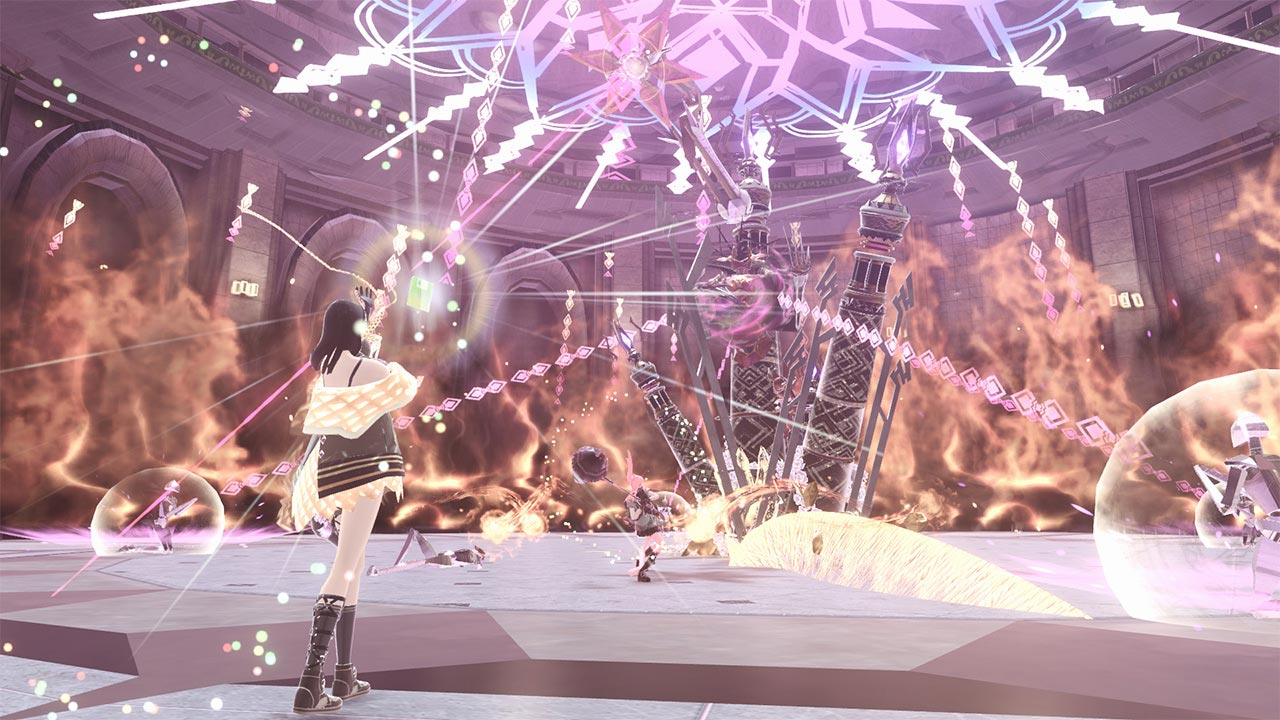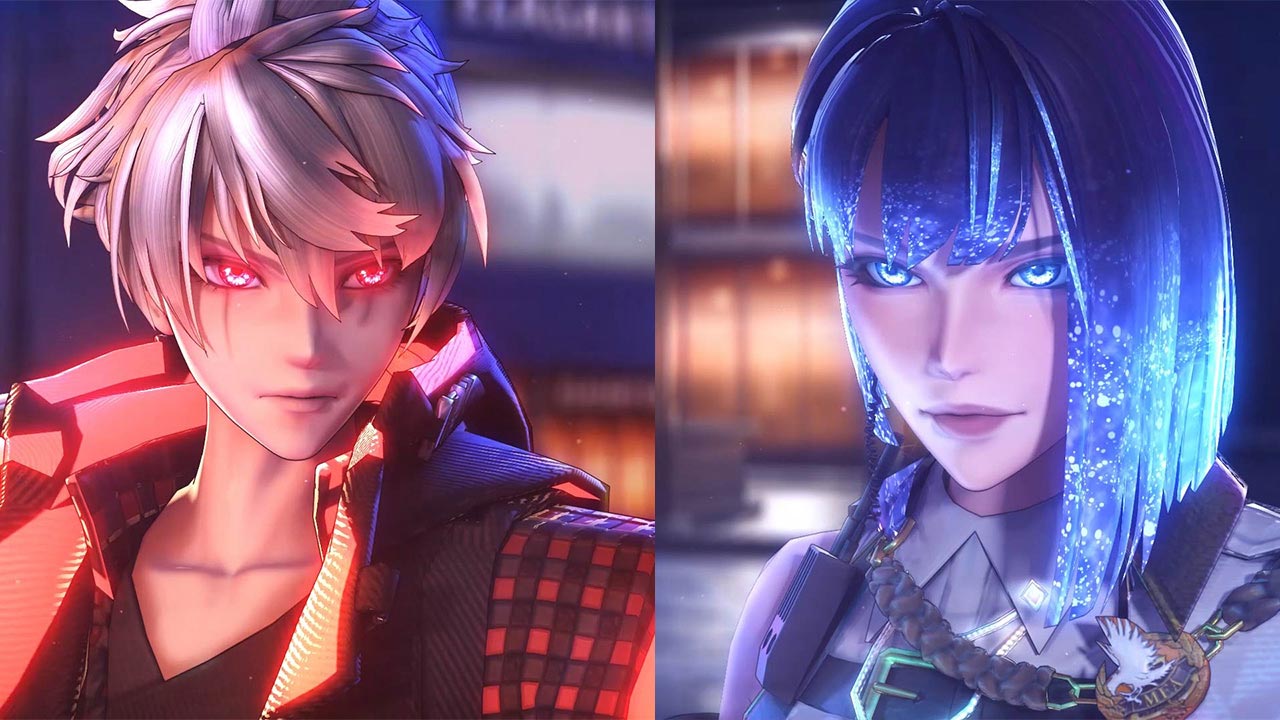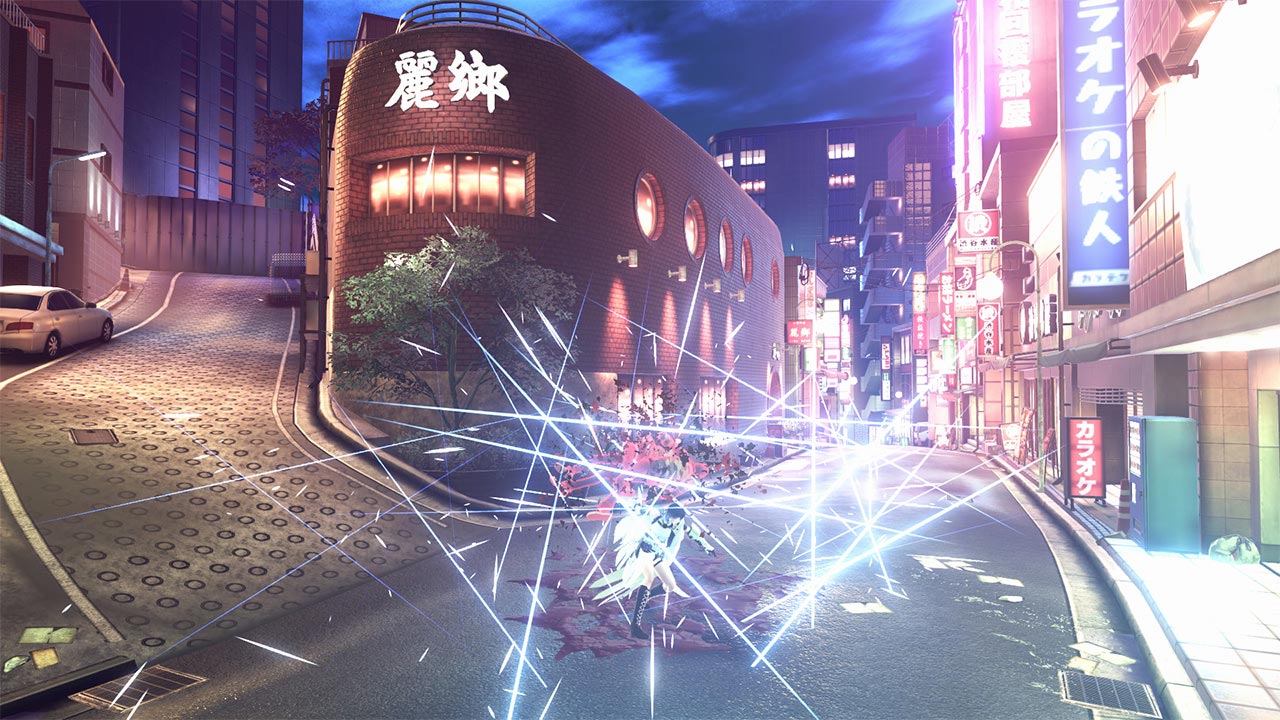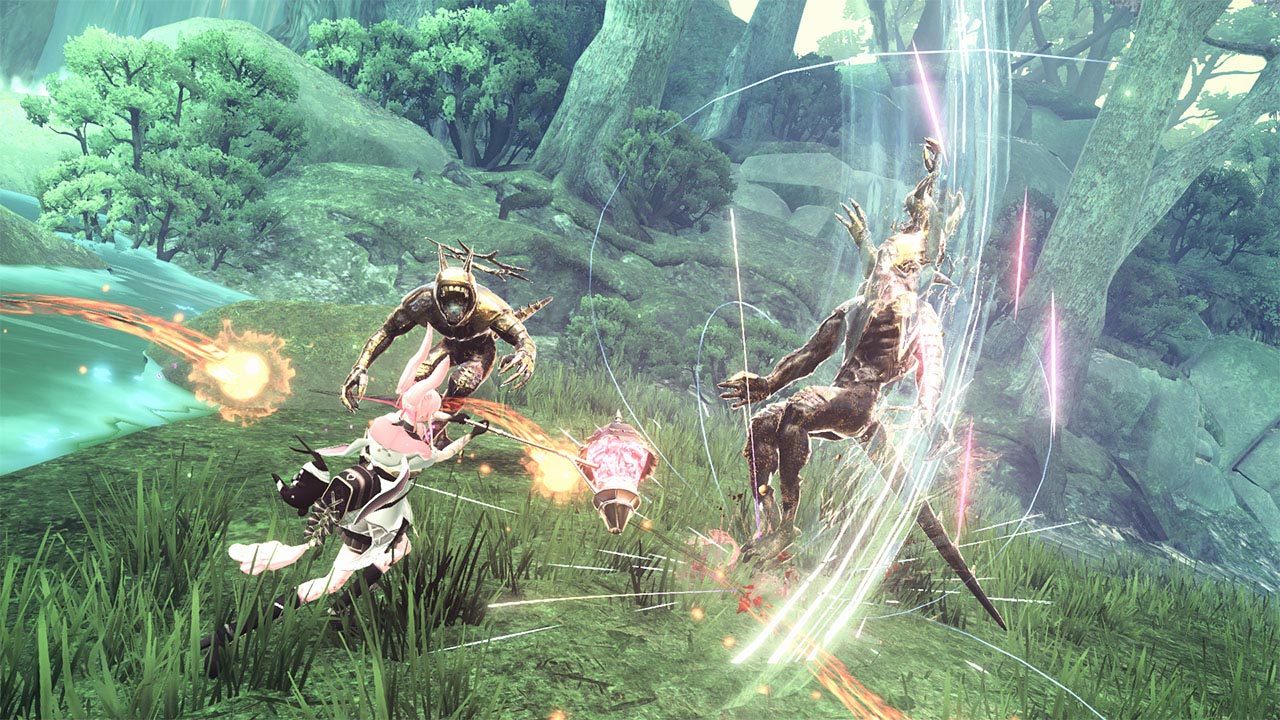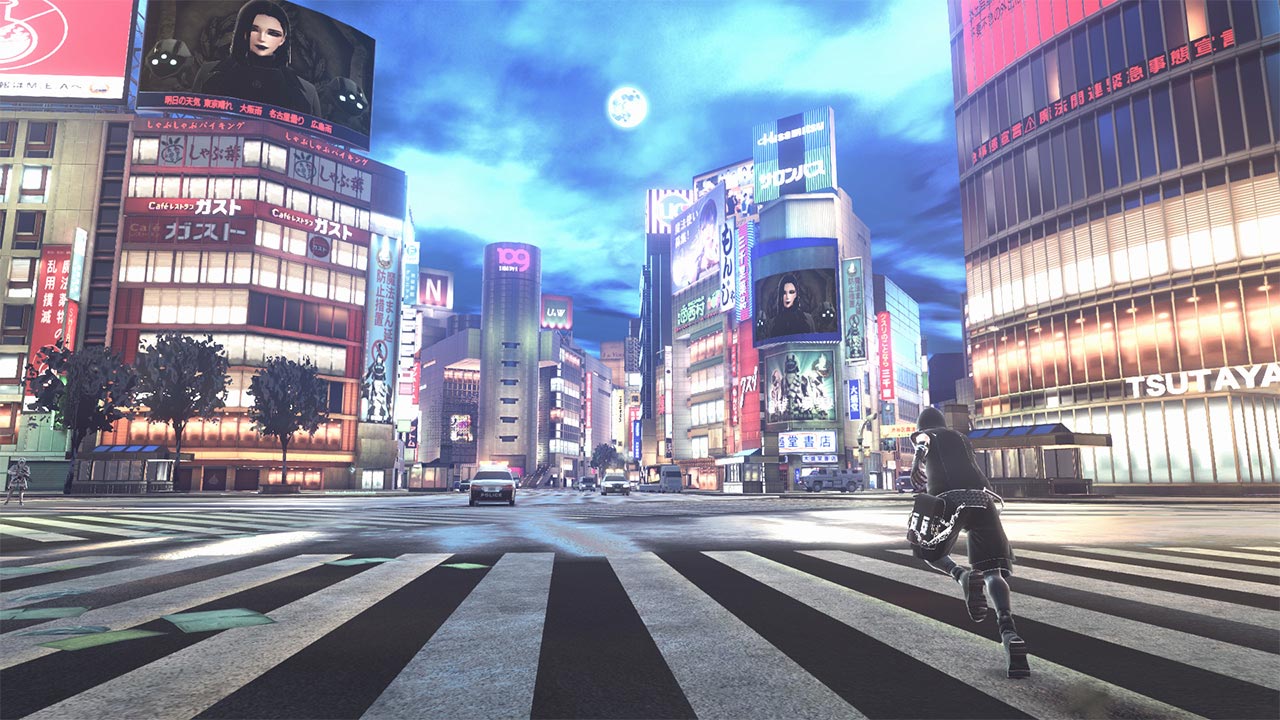Suppression. Liberation. Frustration.
I always like to see the announcement of a new IP. The gaming industry lives under a canopy of sequels, spin-offs, and remasters, making it hard for new franchises to find sunlight. Natsume Atari and FuRyu’s Reynatis managed to find its opening, but I feel like it needed some more room to grow.
Reynatis is an action JRPG rife with that wonderful melodrama that makes the genre so fun. It’s set mostly in modern-day Shibuya, but it’s a day in which magic exists. Some people have it, some don’t, leading to heavy regulation of its use. Within this environment we have a young wizard, Marin, who wants to be the best magic user who ever lived. We also have Sari, a magic user who works for the organization that enforces its regulation. You can see where these two are headed.
The player controls both of these characters in turn, engaging in missions that move the story and side quests that help you level up. There’s plenty of story to be told, quite a bit of which is pretty heavy-handed…in a way that JRPG fans should enjoy even though it doesn’t come with anything new.
The combat system, however, is new. Because magic use is illegal, you can’t just break it out whenever the situation calls for it. But break it out you will, because combat is split into two modes. You have Suppression, in which you’re entirely on defense, and you have Liberation, which allows you to attack. Liberation attracts attention, however, causing bystanders to bust out their cell phones and report you. So, if you’re going to fight, you’ve either got to be quick or private about it. Or both.
The truly interesting thing here is that you’re forced to learn how to be defensive. A lot of action games will give you dodges and blocks, but you can power through most fights with only minimal use. If that doesn’t work, you can lower the difficulty. That’s a nada in both cases with Reynatis. First, there are no difficulty settings; you’ll either get good at its default setting or you won’t play. Second, defensive maneuvers are required to power up your offense. You have no choice but to learn the perfect dodges and blocks in order to make it through even the most basic battles.
For the first few hours, this will be pretty annoying as you fumble through various button presses and stick movements. Once you get it, however, combat becomes pretty slick and enjoyable…when it’s not getting in its own way (more on that in a bit). It helps that Marin and Sari each have traveling companions you can swap in. This keeps things fresh as you turn the fighting over to different characters with different weapons and skills. Seeking the most effective fighter for the various enemies can be pretty thrilling.
Liberation and Suppression aren’t relegated solely to combat, either. When exploring Shibuya, you can go into Liberation mode to see items you wouldn’t otherwise detect. Again, though, the people won’t like this, so you’ll either need to swap back quickly or find a good place to hide. Stay in Suppression mode too long, however, and you’ll build up stress. Hit 100%, and you’re forced into Liberation mode. It seems like a lot to manage, I know, but it’s actually pretty easy to balance.
Exploration and combat aren’t relegated solely to Shibuya. You’ll often need to enter another dimension—called Another—where you’ll fight a bunch of monsters and acquire some handy items before reaching the boss at the end. I think these Another levels best benefit the game by providing some different scenery. Shibuya may look great, but a whole game set there would grow tiresome.
The story gets pretty convoluted as things move along, and it never becomes terribly compelling. I’m fine with characters being melodramatic, but not maudlin. The line between them is not too fine. So, gameplay becomes the selling point, and a few issues prevent that from really taking off. The biggest of these is the combat camera, which can be downright cruel when in tight quarters. Trying to avoid attacks from multiple enemies when you can’t actually see the enemies is infuriating. Oddly, although the game suffers from frame-rate drops when exploring Shibuya, they’re generally fine during the actual battles.
The frame-rate issues may be because Reynatis tries to do too much visually, at least on the Switch. The characters and the environments both seem…off, for lack of a technical term. You can almost see exactly where the visual sacrifices had to be made on the Switch. That’s not a huge deal; we’re used to it, right? But you can tell that so much love went into this interpretation of Shibuya that I felt like I was letting the developers down by accepting their compromises for Switch hardware.
On the other hand, the developers let me down with the numerous glitches. Reynatis froze on me multiple times, often right after a boss battle, forcing me to engage it again (on the bright side, I really did become quite adept with this game’s combat system). The game even glitched on me once when simply trying to exit the menu. The UI started flickering and wouldn’t leave the screen, although I could hear Sari running around underneath it.
So, although I do think Reynatis is a game that JRPG fans will want to try out, I don’t suggest trying it on the Switch. If you have no choice, wait until we’re deep into the Switch’s twilight and you’re just looking for something to fill the time leading up Nintendo’s next console release. As far as JRPG’s go, Reynatis is actually quite short—30 to 40 hours—making it the preferable option over replaying an earlier game from your library.
Review: Reynatis (Nintendo Switch)
Fair
Reynatis is a game with ambitions. Vaulting ambitions, unfortunately. Its convoluted story, annoying combat issues, and systemic glitches will turn away all but the most devout of action- JRPG fans. But if you’re in that category and you’re up for something new, there are enough clever approaches here to make this trip to alternate Shibuya worthwhile.

